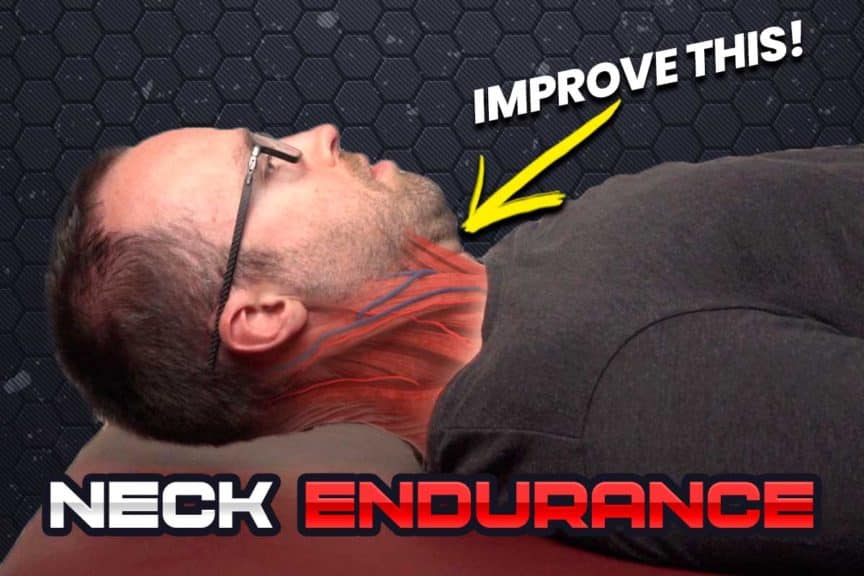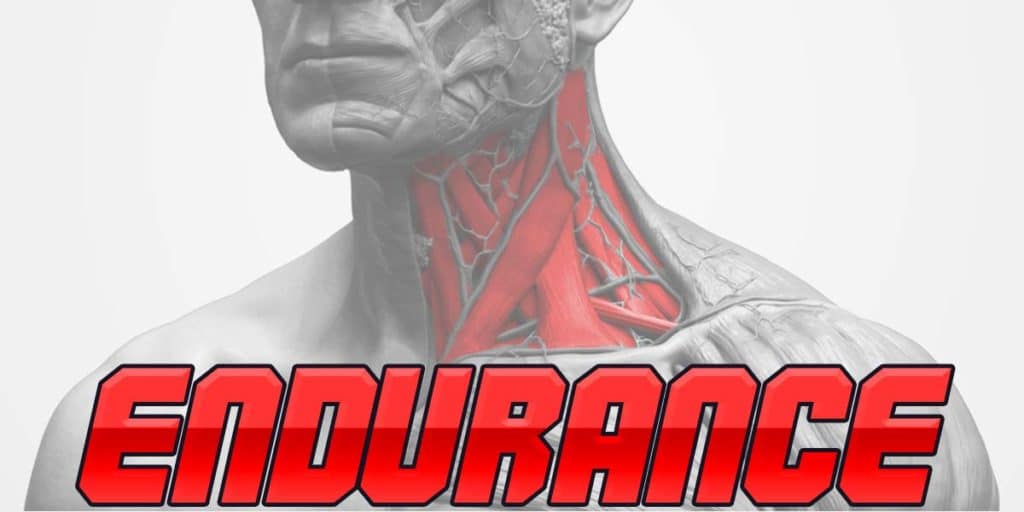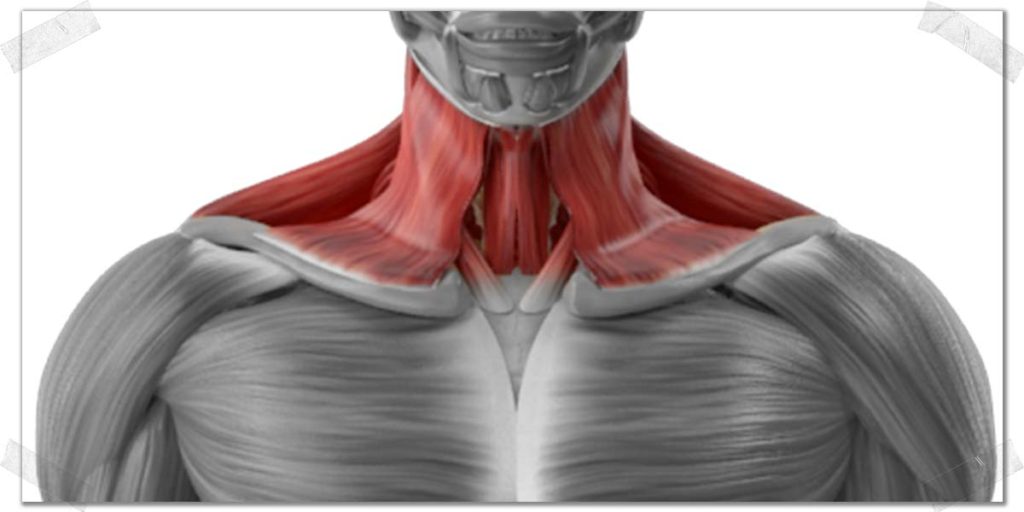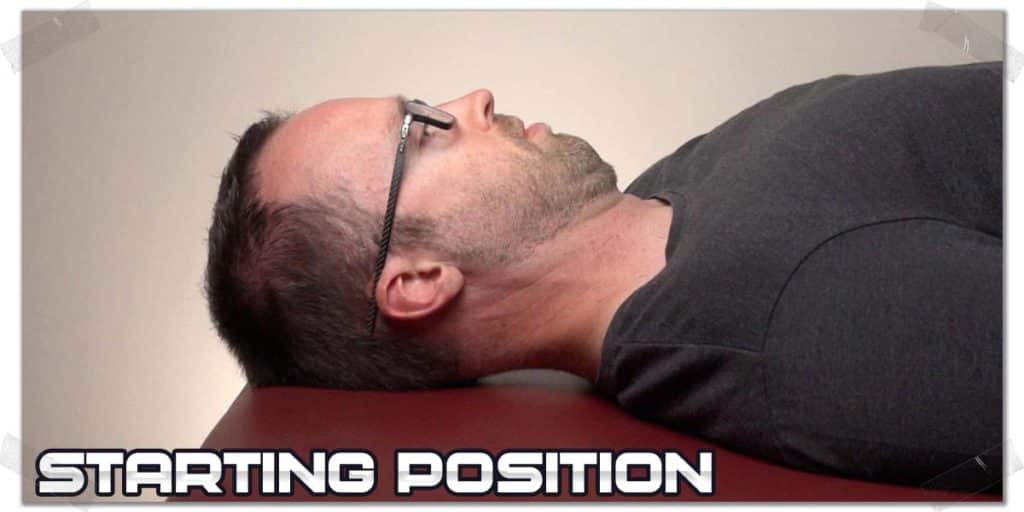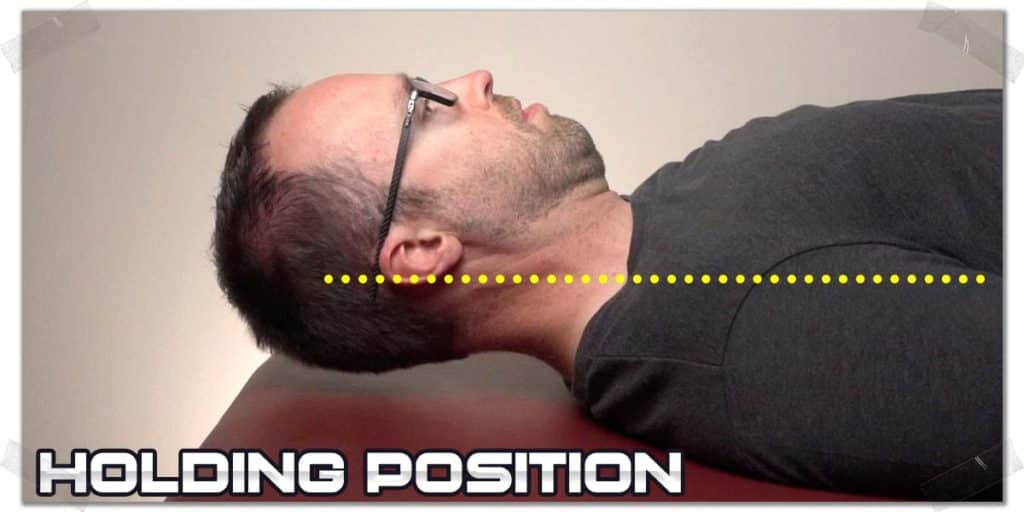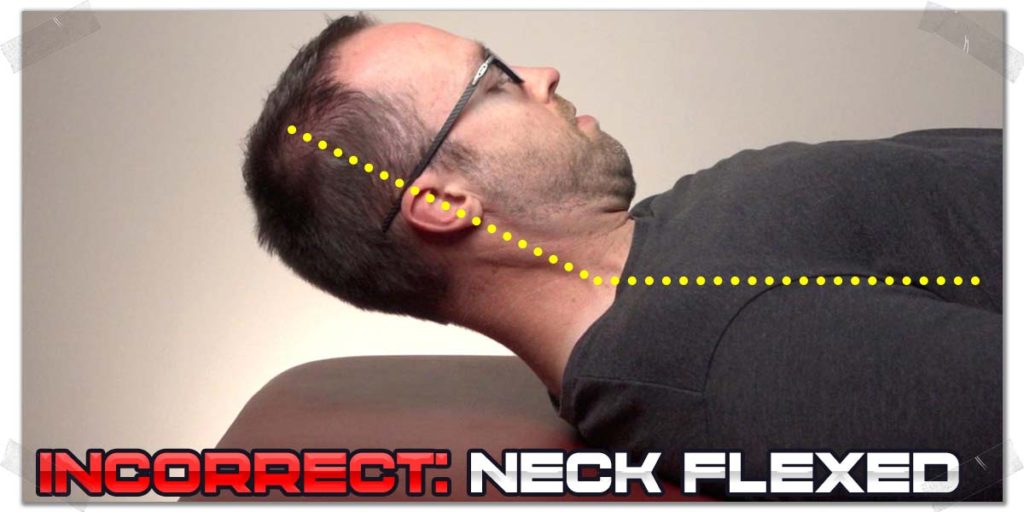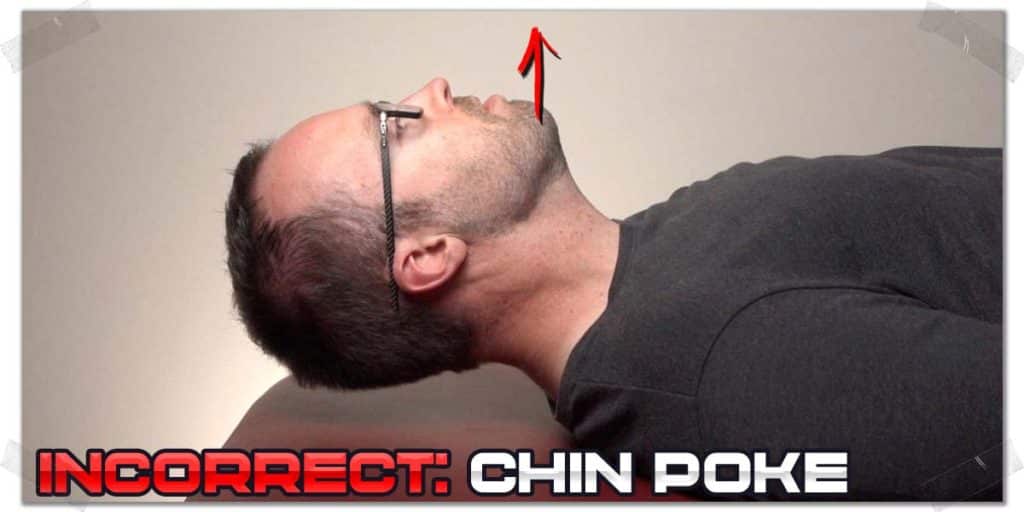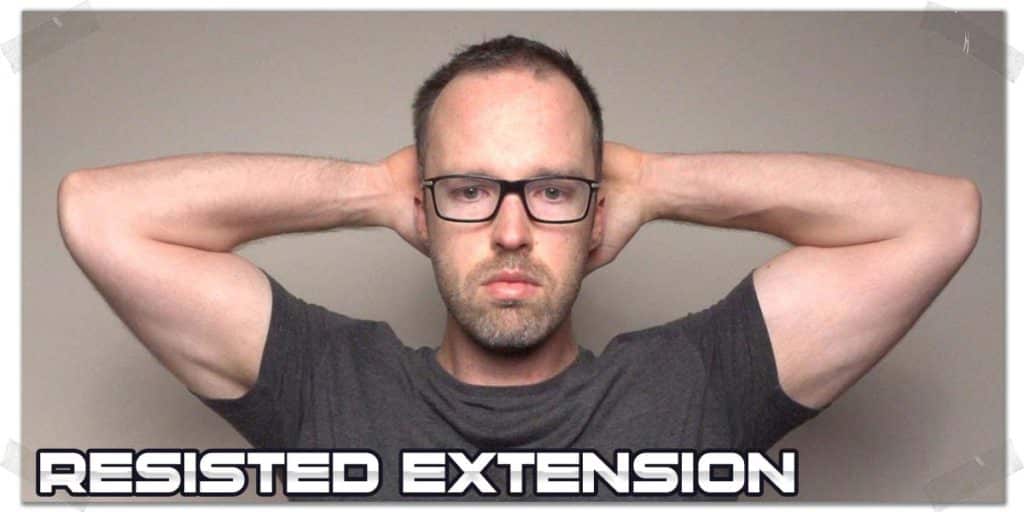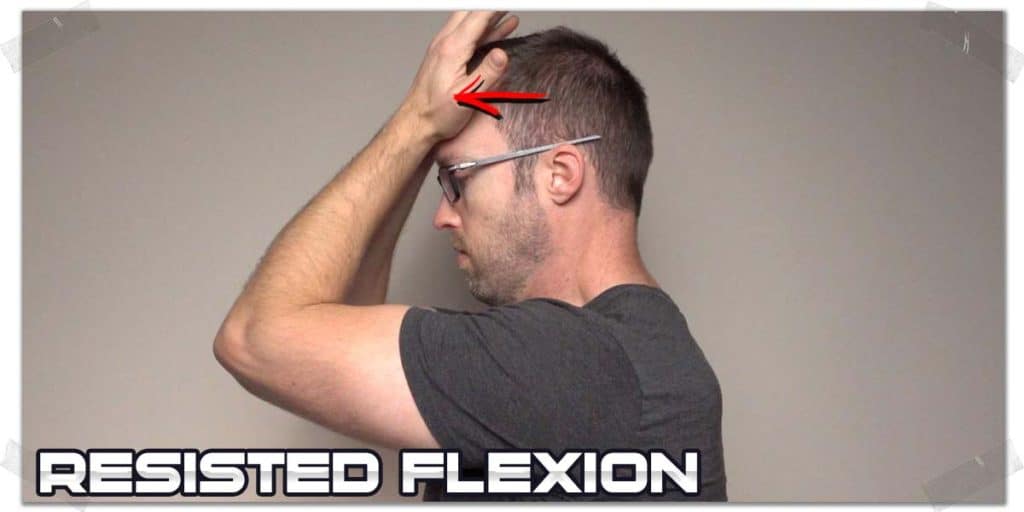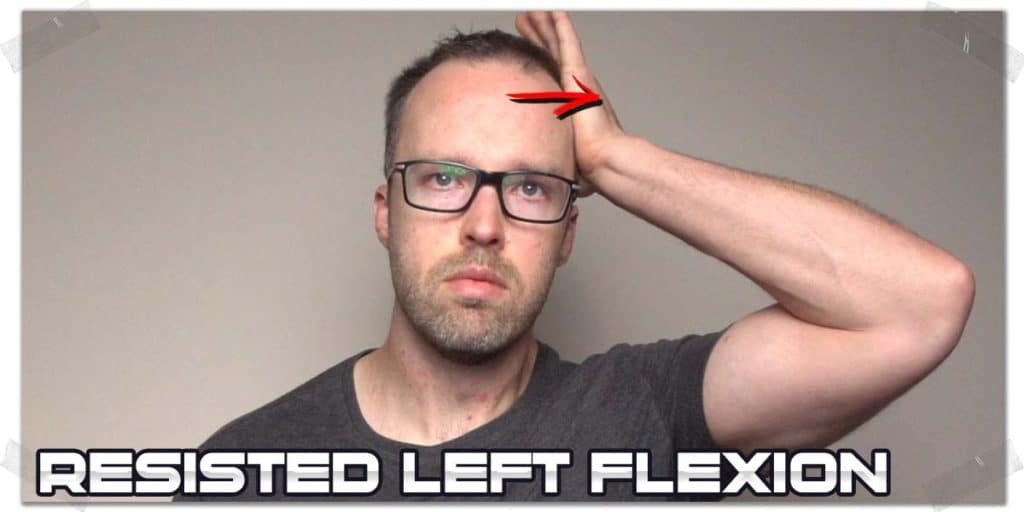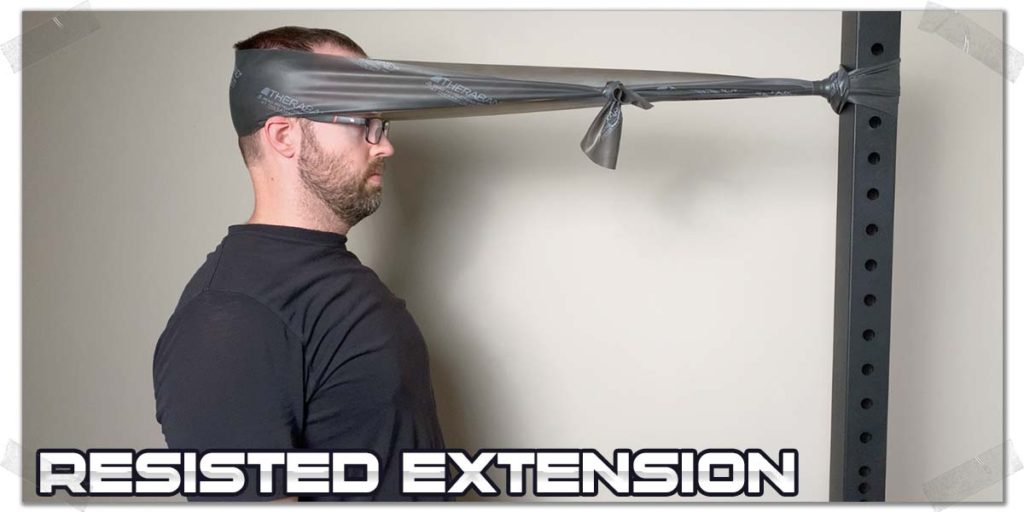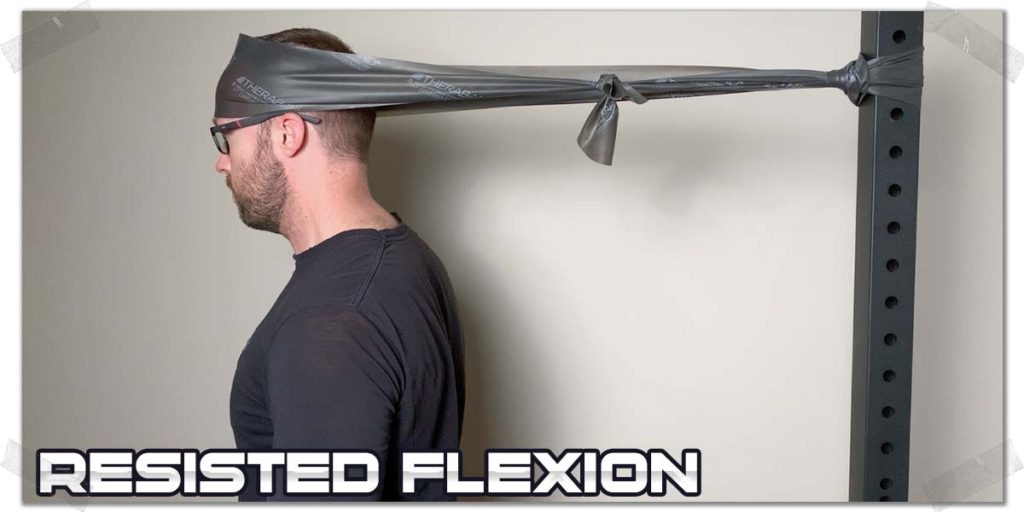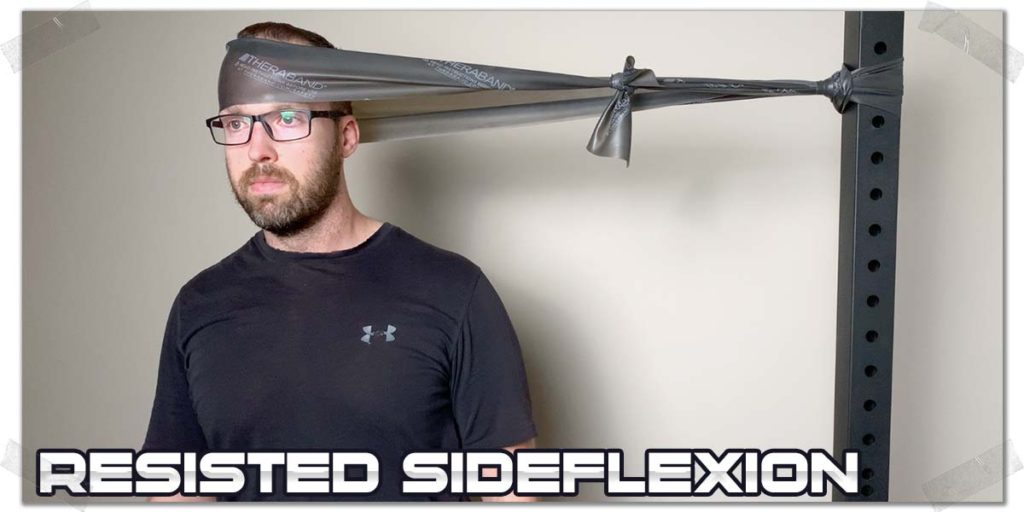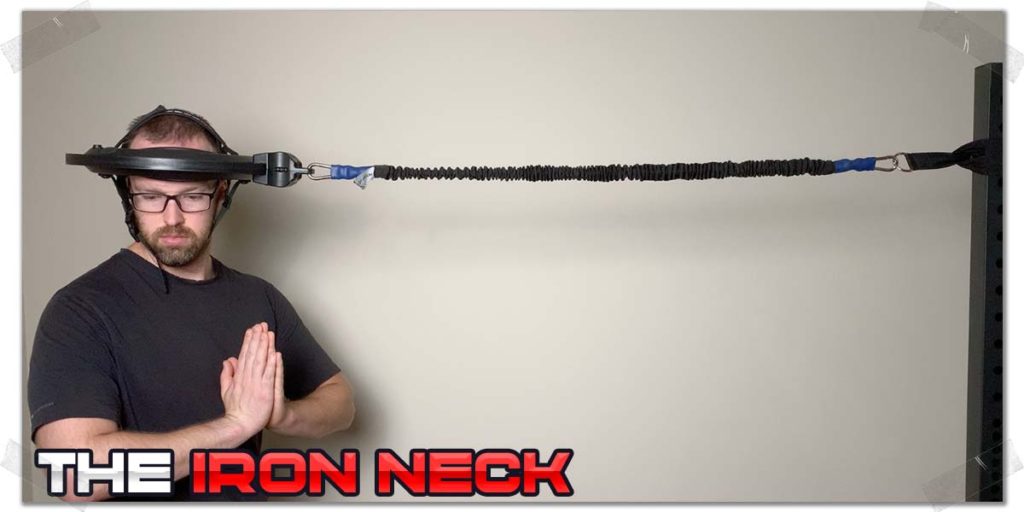Just as a chain is only as strong as its weakest link, your neck is only as strong as its weakest ability. Healthy necks need adequate mobility, strength, motor control, and muscular endurance. Regarding that last feature: if you’re unsure if you have adequate endurance or want to work on improving your neck’s endurance, this article has you covered for a brilliant starting point.
The deep cervical neck flexor endurance test is a scientifically validated exercise for neck endurance. It can be used to determine if neck endurance is lacking and improve the endurance of the deep neck muscles on the front of the neck. It can be performed at home and without equipment.
So, if you want to learn how to perform this test, see how your deep neck endurance stacks up, and want additional exercises on how to begin a simple (yet effective) regimen for making your neck muscles more resistant to fatigue, keep on reading!
Related article: The Best Way to Stretch Your Stiff Upper Neck (A Physio Explains)
The importance of neck muscle endurance
Muscular endurance simply refers to a muscle’s ability to resist becoming fatigued (tired) when undergoing sustained positions or repeated activities; it is different from strength, which refers to how much force a muscle (or muscles) can produce. Our neck muscles are like any other skeletal muscle in our body; they need adequate amounts of strength and endurance. Pain and movement dysfunction of the neck can result in these muscles lacking adequate endurance to produce or sustain positions with daily activities or sporting-based activities.
Unfortunately, we often fail to pick up on any underlying strength or endurance issues within our neck muscles that may indicate pain or dysfunction is potentially lurking around the corner. Few enough people perform exercises for strengthening their necks as is, and even fewer work on the muscular endurance of their necks. The result is that individuals often experience neck pain since they fail to pick up on any of these warning signs before it’s too late.
Thankfully, a substantial amount of scientific research has been performed on the neck’s muscular function. One aspect of this research has shown direct relationships between deep anterior (front-sided) neck muscle health and an individual subsequently experiencing neck pain or movement dysfunction.1–3 Generally speaking, these findings have shown that the less strength and endurance these particular neck muscles have, the more dysfunction and neck pain an individual may experience.
The deep cervical neck flexor endurance test
Researchers have established normative data (based on one’s biological sex and age) for how much endurance these neck muscles should have by using a simple test known as the Deep Neck Flexor Endurance Test (sometimes called the cranio-cervical-flexion test).4
As its name implies, this test examines the endurance of muscles situated deep in the front side of the neck. These muscles include:
- Longus capitis
- Longus coli
- Rectus capitis anterior
- Rectus capitis lateralis
Collectively, these muscles are often referred to as the deep cervical neck flexors.
Pro tip: The deep cervical neck flexors – particularly the longus coli – are often very weak or underactive in individuals who have experienced whiplash-associated disorder (WAD), such as from a motor vehicle accident.
If you want to find out if you’re lacking adequate muscle endurance (and thus likely be at an increased risk of experiencing neck pain or dysfunction) with your deep neck flexors, you can perform this test all by yourself at home and compare your endurance time to the information below.
Performing the test: What You’ll need
- A flat, firm surface to lay down on
- A stopwatch to measure your time
- A pillow to support your head IF you are unable to assist your neck in a neutral starting position
- It may also be helpful to have a friend or family member watch you perform your movement to ensure you do the movement correctly (or you can film yourself with your phone if you’d like).
Performing the test: How to
- Start by laying on your back with your knees bent and resting your hands by your side or on your stomach.
- Tilt your chin down until your forehead is parallel to the ground (you may want to have a friend tell you when this has occurred).
- Your neck should now be relatively neutral and stay in this position for the upcoming movement (Figure 1).
- Lift your head up off the ground about one inch WITHOUT letting your chin lift upwards or your forehead becoming non-parallel with the floor (Figure 2).
- Once you’ve achieved this position, start your timer.
- Hold this position precisely without ANY deviation in position or movement (common mistakes shown in figures 3 and 4). The test is over when you can no longer hold this position (figure 2).
- You can perform this test more than once and average out your numbers if you’d like. Just make sure you have adequate rest and recovery time in between attempts.
Comparing your results to established scientific norms
Once you know your time, you can compare it with the following times established in the scientific community. The following data comes from Domenech et al. in their 2011 paper The Deep Neck Flexor Endurance Test: Normative Data Scores in Healthy Adults
- Males (age 20 – 80): 39 seconds
- Females (age 20 – 80): 29 seconds
If your time is lower than what is listed above, you may have some work to do. Remember, deep cervical neck muscle endurance correlates with neck pain and dysfunction, so getting your deep neck muscular endurance up to at least average times would be a wise step.
If you need some tips on how to begin strengthening your neck, you can try implementing any of the following tips below!
How to quickly start improving your neck strength and endurance
When attempting any of the following tips, be sure they don’t cause any pain. Proper neck training should cause a sense of effort and even fatigue (tiredness perceived within the muscles) but never pain.
- Practice the Deep Neck Flexor Endurance test a couple of times per week. Performing 1-2 maximal holds every couple of days can be a great way to enhance your neck muscles’ strength and endurance.
- Give your neck some resistance using your own hands. Using your hands to provide resistance to your own neck movements in different directions is a great way to activate and strengthen your neck muscles in different planes of movement.
Try any of the following positions. You can add one movement at a time and build them into a routine week by week or opt to implement them all right away if appropriate for you to do so.
- To perform resisted neck extension: interlock your fingers from each hand behind your head and press the back of your head into your hands without letting your arms move.
- To perform resisted neck flexion: place your palms on your forehead and press your head into your palms without letting your arms move.
- To perform resisted sideflexion (left or right): place your palm on the side of your head and press your head into your palm without letting your arm move.
Each of these exercises requires you to push your neck into the palm of your hand. There shouldn’t be any movement from either your hand or your neck. This is referred to as an isometric muscle contraction, where the neck muscles, in this case, are contracting but not producing any physical movement. Isometric strengthening has been shown to be an effective intervention for improving neck strength and reducing neck pain.5
Push your neck into your hand for each exercise and try to push with a firm but comfortable amount of pressure, and hold this pressure for thirty seconds. You should feel effort and perhaps fatigue but zero pain.
Advanced neck endurance training
If you find yourself quickly progressing beyond what can be achieved using your hands (or you are looking for a bit more exercise variety altogether), you’ll likely need to use some exercise equipment to help get the job done. There are two different routes to take here, and both are perfectly acceptable depending on your needs and budget.
Regardless of which route you take (both are discussed below), both involve using resistance to challenge your neck’s endurance (and strength), which can be done in multiple directions. The difference is that one is done with TheraBand, which is relatively inexpensive yet more limiting in its exercise variety. In contrast, the other is done with specialized equipment that provides much more extensive strength and endurance exercises for your neck, albeit at a steeper financial entry point.
Both hold substantial benefits in their own right, so let’s briefly look at both.
Using TheraBand for neck endurance
TheraBand only costs a few dollars, and you can get it in different strengths (a different color corresponds to a different resistance level). TheraBand will provide you with various levels of resistance against your neck than what you can likely tolerate with using your arms and hands. Your exercise variety will be somewhat limited here, but the benefit is that you aren’t spending much money.
The best way to use TheraBand for neck endurance training is to loop the band around a sturdy, stationary object, then place it around your forehead. From there, follow the steps below.
Special note: Make sure you don’t have any allergies to Latex before using TheraBand.
- Loop the band around your forehead.
- Step back from the anchor point until you feel a mild tension develop in your neck. Step as far back as you feel is comfortable to challenge your neck muscles appropriately.
- Keep your neck motionless, so it doesn’t get pulled towards the band’s anchor point (your neck should stay vertical).
- Hold this position until you feel moderate fatigue in your neck muscles. Then, step back in for a few moments to let your muscles rest.
- Repeat for as many repetitions as desired.
Using the Iron Neck for neck endurance
TheraBand works great, and for many individuals, there’s no need for anything else. However, if you’re in the market for more advanced training, greater training variety, and want to challenge the strength of your neck muscles (in addition to their endurance), it may be worth using the Iron Neck.
I’ve been using the Iron Neck for over a year now on many of the patients whom I treat in the clinic (when appropriate for them, of course). The results I’ve had have been outstanding; I even use it on myself for my neck issues.
If you want to learn more about who this device can benefit and how it gets the job done, you can check out my in-depth article:
Related article: The Iron Neck: The ULTIMATE Review from a Physical Therapist
Or you can watch the video version:
And keep in mind: if you feel this device is something you’d like to pick up, you can use the discount code “STRENGTHRESURGENCE” for 15% off any purchases on the Iron Neck website at the checkout screen.
Final thoughts
Remember, the best way to get out of neck pain is to prevent it from ever occurring in the first place. If your neck endurance is lacking, consider it a good idea to begin implementing some strengthening interventions. The basics will take you a long way toward improving your neck’s overall health and might even be all you need. And should you want even more training variety, specific equipment, such as different types of TheraBand or the Iron Neck, can take your neck health to new levels.
References:
5. Tsang SM, Chan KT, Ho PL, Kwok JC, Daniel HT, Tsoi HH. Comparison between velocity-specific exercise and isometric exercise on neck muscle functions and performance: a randomised clinical trial. BMC Musculoskelet Disord. 2021;22(1):1-16.

Hi! I’m Jim Wittstrom, PT, DPT, CSCS, Pn1.
I am a physical therapist who is passionate about all things pertaining to strength & conditioning, human movement, injury prevention and rehabilitation. I created StrengthResurgence.com in order to help others become stronger and healthier. I also love helping aspiring students and therapists fulfill their dreams of becoming successful in school and within their clinical PT practice. Thanks for checking out my site!

